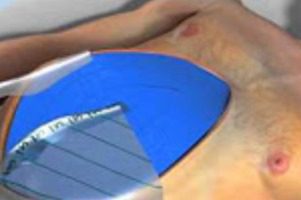
Negative Pressure Wound Therapy Systems. The use of Negative Pressure Wound Therapy systems have been associated with deaths and serious complications, the U.S. Food & Drug Administration (FDA) warned yesterday. In a health alert posted on its Web site, the FDA said it will continue to monitor adverse events associated with Negative Pressure Wound […]

Negative Pressure Wound Therapy Systems. The use of Negative Pressure Wound Therapy systems have been associated with deaths and serious complications, the U.S. Food & Drug Administration (FDA) warned yesterday. In a health alert posted on its Web site, the FDA said it will continue to monitor adverse events associated with Negative Pressure Wound Therapy systems, and will make available any new information that might affect their use.
Negative Pressure Wound Therapy helps various types of open wounds heal by creating a negative pressure (vacuum) at a well-sealed wound site. The vacuum helps remove fluids and infectious materials and draw wound edges together. Negative Pressure Wound Therapy is most commonly used with burns, flaps, ulcers and grafts, but it is contraindicated for several types of injuries, including wounds where there are exposed nerves, organs and vasculature.
In the last two years, the FDA has received six death and 77 injury reports associated with Negative Pressure Wound Therapy systems. Most of the deaths reported to the FDA occurred at home or in a long-term care facility.
Bleeding was the most serious complication and was reported in six death and 17 injury reports. Extensive bleeding occurred in patients with vascular grafts (such as femoral and femoral-popliteal grafts), in sternal and groin wounds, in patients receiving anti-coagulant therapy, and during removal of dressings that adhered to or were imbedded in the tissues. Patients with bleeding required emergency room visits and/or hospitalization and were treated with surgical procedures and blood transfusions.
According to the FDA, 27 reports indicated infection from original open infected wounds or from retention of dressing pieces in the wound. Retention of foam dressing pieces and foam adhering to tissues or imbedded in the wound were noted in 32 injury reports. The majority of these patients required surgical procedures for removal of the retained pieces, wound debridement, and treatment of wound dehiscence, as well as additional hospitalization and antibiotic therapy.
The FDA has advised healthcare professionals to carefully consider patient risk factors before employing Negative Pressure Wound Therapy. They should assure that the patient is monitored frequently in an appropriate care setting by a trained practitioner. In determining the frequency of monitoring, the patient’s condition, including the wound status, wound location and co-morbidities, should be considered.
If a patient is considered a candidate for in-home Negative Pressure Wound Therapy, healthcare providers should:
The personal injury attorneys at Parker Waichman LLP offer free, no-obligation case evaluations. For more information, fill out our online contact form or call 1-800-YOURLAWYER (1-800-968-7529).


